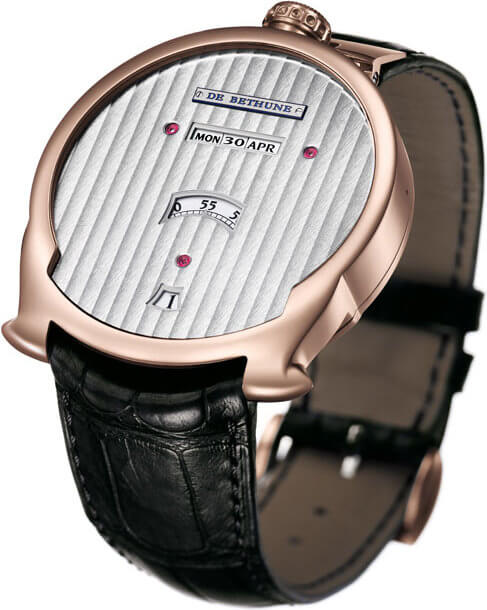In the world of watchmaking, David Zanetta and Denis Flageollet are two of the new generation’s most promising rising stars. The co-founders of the De Bethune brand have transformed an obsession into a philosophy: to take this ancestral art to a new level of excellence by drawing on the kind of advanced expertise more commonly reserved for today’s high-tech industries. And they’re doing it all themselves.
De Bethune was founded in Sainte-Croix in 2002. This full-fledged Manufacture produces every part of its watches, from the case to the hands down to the smallest components. And the brand has other strings to its bow. Building on its completely verticalised production, it boasts a treasure that many of its competitors envy: an R&D laboratory where physics, mathematics and mechanics deliver their secrets to better serve the watchmaker’s art.
Revolutions
Experts agree: some of the most astonishing timepieces of recent years have come out of this hotbed of ideas. Their design is a carefully studied rendering of the most contemporary aesthetics while the movements use innovation to resolve some of the burning issues of Fine Watchmaking.
The first De Bethune revolution took place in 2004. Not happy with the escapement’s random performance, David Zanetta and Denis Flageollet looked to futuristic materials as the solution. They imagined a balance made from titanium and platinum, two very different but complementary materials: the lightness of the titanium used for the centre of the balance offsets the heavy platinum on the outside. The result is stable inertia which in turn allows for precise regulating. Coupled with a triple shock-absorbing system, it gives the movement maximum protection against shocks.
Keep it simple
The brand continues to astound the industry with its creativity as other innovations, both mechanical and visual, have followed. Take the example of the Digitale, an extraordinary timepiece and a showcase for all the Manufacture’s skills.
Part of the Dream Watch series, the Digitale is both art and science, a masterpiece of mechanical watchmaking but also a demonstration of undisputed technical advancement. The only features on its astonishingly sober dial are three windows for day, date and month, minutes, and jumping hours. For a specialist in watchmaking, “this is where De Bethune’s genius lies. It uses its understanding of technology and its expertise to produce something very simple.” The jumping hours function, which is known for its complexity, replaces the hour hand with an aperture through which the hour digit can be seen. The change from one digit to the next takes place instantaneously on the hour, in this case thanks to a movement that features the brand’s titanium/platinum balance oscillating at a frequency of 28,800 vibrations per hour.

Moonstruck
De Bethune truly won over the market when its founders decided to reach for the stars. The back of the Digitale’s case reveals a starry sky complete with a stunning three-dimensional moon phase, a unique and ultra-perfected technical feat. The moon, represented by a platinum and flame-blued steel sphere, emerges from a secondary dial and revolves on its own axis. The illusion is perfect.
On the mechanism side, the moon rotates by means of a balance made from a silicon disc set inside a platinum ring. This technology does away with the need for a spring to create the extraordinary impression that the moon is floating in its sky-dial. Each phase of the moon is reproduced with almost perfect fidelity, thanks to a process whereby the rotation of the sphere is calculated with extreme precision coupled with a rapid correction function.
“The moon phase will remain accurate for 120 years when it will need adjusting by just one day,” De Bethune explains. Longer than it will take the brand to invent another revolutionary mechanism to correct this tiny imprecision.













